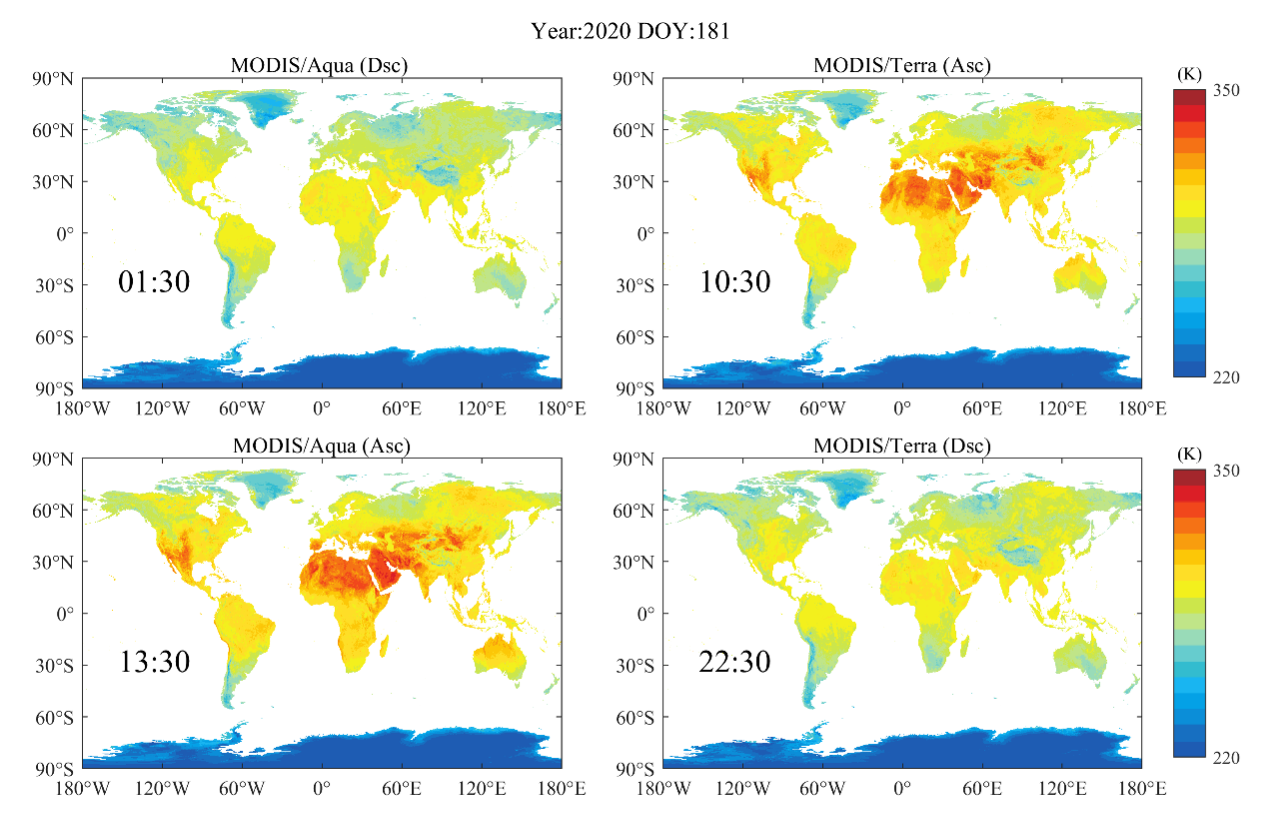Global Spatiotemporal Continuous Land Surface Temperature Dataset Released
Land surface temperature (LST) plays a critical role in the study of the physical and biological processes of the Earth’s surface at global and regional scales and is widely used in research fields such as meteorology, climate, hydrology, agriculture, and ecology.
A study entitled "Global spatiotemporally continuous MODIS land surface temperature dataset" was recently published in the Scientific Data. Dr. ZHAO Tianjie from the State Key Laboratory of Remote Sensing Science with the Aerospace Information Research Institute (AIR), Chinese Academy of Sciences (CAS) is the corresponding author. The relevant dataset is published online at the National Tibetan Plateau/Third Pole Environment Data Center and open access to users.
The dataset is based on the data interpolating empirical orthogonal functions (DINEOF) method and the cumulative distribution function (CDF) matching method. The main input data are Terra/Aqua MODIS LST products and ERA5-Land reanalysis data.
The method makes full use of the spatiotemporal information of satellite (thermal infrared) remote sensing LST products and the spatiotemporal continuity of reanalysis data to alleviate the influence of atmospheric conditions such as clouds on the estimation of LST, and finally reconstructs a high-quality global spatiotemporal continuous LST dataset.
The temporal resolution of this dataset is four times a day, the spatial resolution is 0.05°, and the time span is from 2002 to 2020. Figure 1 shows the global spatial distribution of LST at different overpassing times (01:30, 10:30, 13:30 and 22:30) of this dataset.

Figure 1. Global spatiotemporally continuous land surface temperature (four times a day, the 181st day in 2020). (Image credit: AIR)
This research was co-funded by the "Spatio-temporal Three-Pole Environment" project (XDA19070204) of the Strategic Priority Research Program of the Chinese Academy of Sciences (Class A) "Big Earth Data Science Engineering Program" and the National Natural Science Foundation of China "Smart Remote Sensing of Key Variables of Terrestrial Water Cycle at Multiple spatio-temporal scales" (42090014).



News & Events